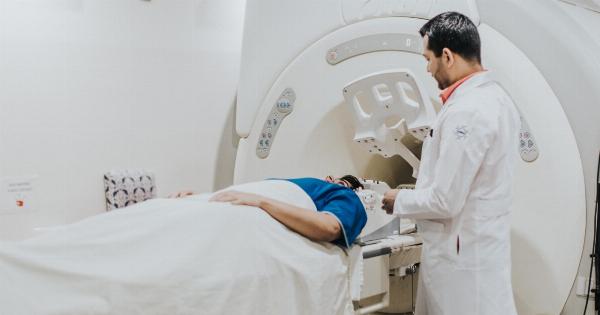Fear is an essential emotion that humans and animals experience as a response to perceived threats. It initiates a wide range of physiological and behavioral reactions, allowing individuals to either confront or avoid potential dangers.
While fear serves a protective purpose, excessive or irrational fear can detrimentally impact one’s quality of life, leading to anxiety disorders and phobias. Therefore, understanding the neural circuitry involved in fear regulation is crucial for developing effective treatments targeted towards fear inhibition.
The Amygdala: Fear’s Command Center
The amygdala, located deep within the brain’s temporal lobe, plays a central role in the processing and regulation of fear.
This almond-shaped structure consists of several subnuclei, including the basolateral complex (BLA), central nucleus (CeA), and intercalated cells (ITCs). The BLA receives sensory information from various regions of the brain and is involved in fear learning and memory.
The CeA, on the other hand, is responsible for initiating fear responses and coordinating the subsequent behavioral and physiological reactions.
Fear Conditioning and Extinction: A Key Paradigm
In order to study fear inhibition and the underlying brain circuitry, researchers often employ fear conditioning and extinction paradigms.
Fear conditioning involves associating a neutral stimulus, such as a tone or light, with an aversive stimulus, such as a mild electric shock. Over time, the neutral stimulus alone becomes fear-inducing due to this association.
Extinction, on the other hand, refers to the process of unlearning or inhibiting this fear response by repeatedly presenting the conditioned stimulus without the aversive stimulus.
The Prefrontal Cortex: Putting the Brakes on Fear
One brain region that has consistently emerged as crucial for fear inhibition is the prefrontal cortex (PFC). The PFC, located in the frontal lobes of the brain, is involved in higher cognitive functions, decision-making, and emotional regulation.
Specifically, the ventromedial PFC (vmPFC) and the infralimbic cortex (IL) within the medial PFC have been implicated in fear extinction.
Interplay Between the Amygdala and Prefrontal Cortex
Research has demonstrated that the interplay between the amygdala and the prefrontal cortex is crucial for fear inhibition. Fearful stimuli activate the amygdala, which in turn sends signals to the PFC to initiate the fear response.
However, during fear extinction, the vmPFC and IL exert inhibitory control over the amygdala, suppressing fear responses. Disruptions in this amygdala-PFC circuitry have been implicated in anxiety disorders, suggesting its importance in fear regulation.
Connecting the Dots: The Medial Prefrontal Cortex
Studies using animal models have provided further insights into the neural circuitry involved in fear inhibition.
Electrophysiological recordings have shown that the vmPFC, particularly its projection neurons to the BLA, exhibit decreased inhibition during fear extinction. This suggests that the vmPFC actively inhibits the amygdala to suppress fear responses.
The Role of Excitatory and Inhibitory Neurons
Within the medial prefrontal cortex, a balance of excitatory and inhibitory neuronal activity is crucial for fear inhibition. Excitatory neurons promote fear responses, while inhibitory neurons suppress them.
Researchers have found that the activity of inhibitory neurons within the vmPFC increases during fear extinction, leading to the inhibition of amygdala activity and suppressed fear responses. Furthermore, manipulations that enhance inhibitory activity in the vmPFC have been shown to promote fear extinction in animal models.
Making Connections: Long-Range Pathways
In addition to the local connections between the vmPFC and the amygdala, long-range pathways have also been implicated in fear inhibition.
The ventral hippocampus, a brain region involved in memory and emotional processing, sends projections to both the vmPFC and the amygdala. Studies have shown that the integrity of these long-range pathways is necessary for fear extinction, highlighting their role in fear inhibition.
Modulation of Fear Circuitry: Neurotransmitters and Neuroplasticity
The fear circuitry, including the interplay between the amygdala and the PFC, is modulated by various neurotransmitters.
For instance, GABA, an inhibitory neurotransmitter, plays a crucial role in fear extinction by enhancing inhibitory signaling within the vmPFC. Glutamate, an excitatory neurotransmitter, also plays a role in fear regulation, with disruptions in glutamate signaling being associated with fear-related disorders.
Clinical Implications: Targeting Fear Circuitry for Therapeutic Interventions
The identification of specific brain regions and circuits involved in fear inhibition opens up new avenues for developing therapeutic interventions for fear-related disorders.
By targeting the amygdala-PFC circuitry, researchers hope to develop more effective treatments for anxiety disorders, post-traumatic stress disorder (PTSD), and phobias. Techniques such as cognitive-behavioral therapy (CBT), virtual reality exposure therapy, and pharmacological interventions that modulate neurotransmitter activity hold promise for improving fear inhibition and reducing fear-related symptoms.



























